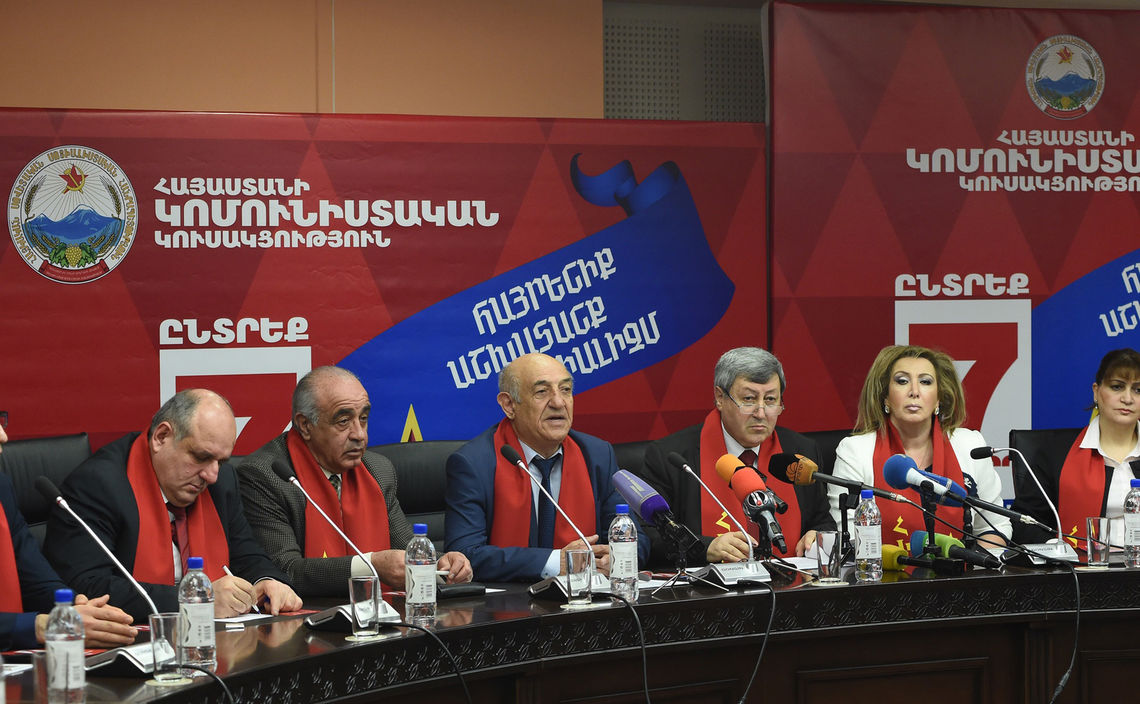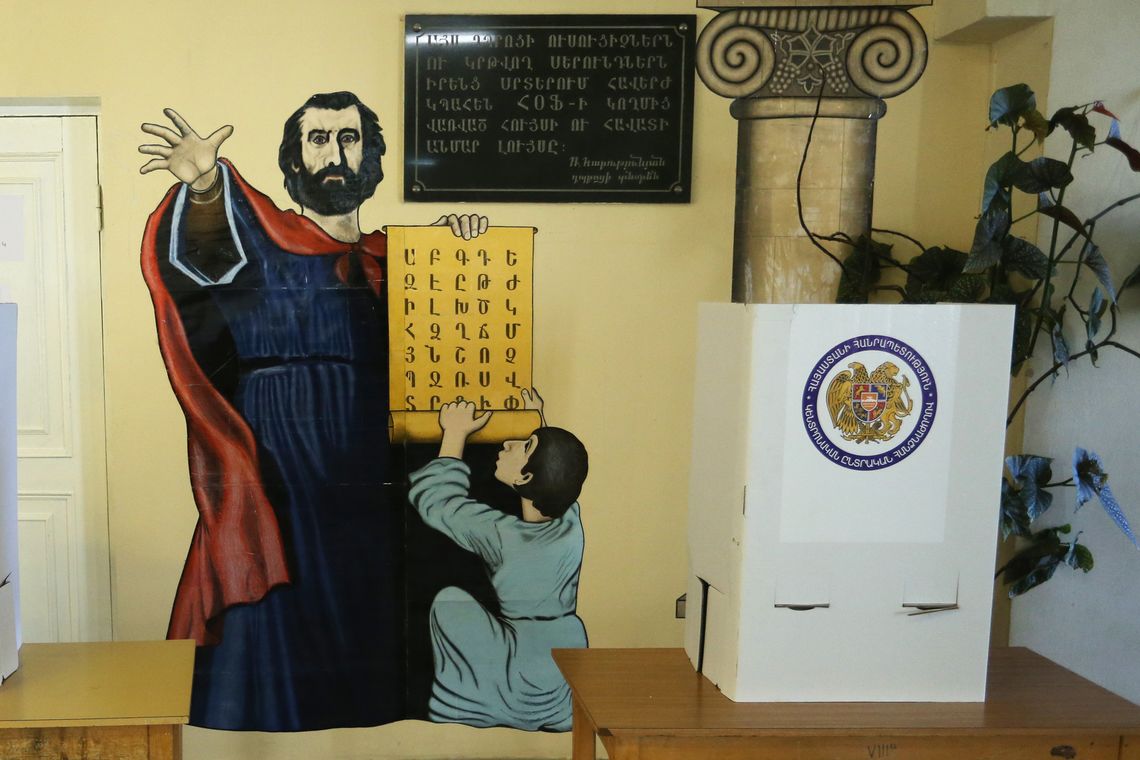

On April 2, 2017, Armenia is set to vote in the first parliamentary elections since the referendum.
The upcoming parliamentary election is significant because it is the first one since the adoption of a new Constitution that shifted the country’s governance from a presidential to parliamentary one.
EVN Report presents a brief summary of the election process and the nine parties and political blocs running for office.
More on Elections
Four political blocs and five political parties will be campaigning this March. Who are they?
Those parties and blocs that successfully secure their place in parliament will be presented in the new legislative body as follows: 50 percent of the national list candidates and 50 percent of the district electoral list candidates will represent each faction.
If none achieve 50%+1 they will have to negotiate with other parties and blocs to form a coalition government (maximum three parties or blocs). If no government is formed however, a second round of voting will take place between the top two ranking parties or blocs (to ensure a stable majority). The remaining parties or blocs will maintain their seats, but not the percentage of seats.
The remaining parties and blocs that have secured their seats in parliament will form the opposition and collectively have to have 33 percent of seat allocation. If the opposition has not secured a collective 33 percent allocation they will be given further seats to secure that threshold. This again will potentially increase the seats in parliament from 101.
Four political blocs and five political parties will be running in the campaign. The official campaign kicked off on March 5.
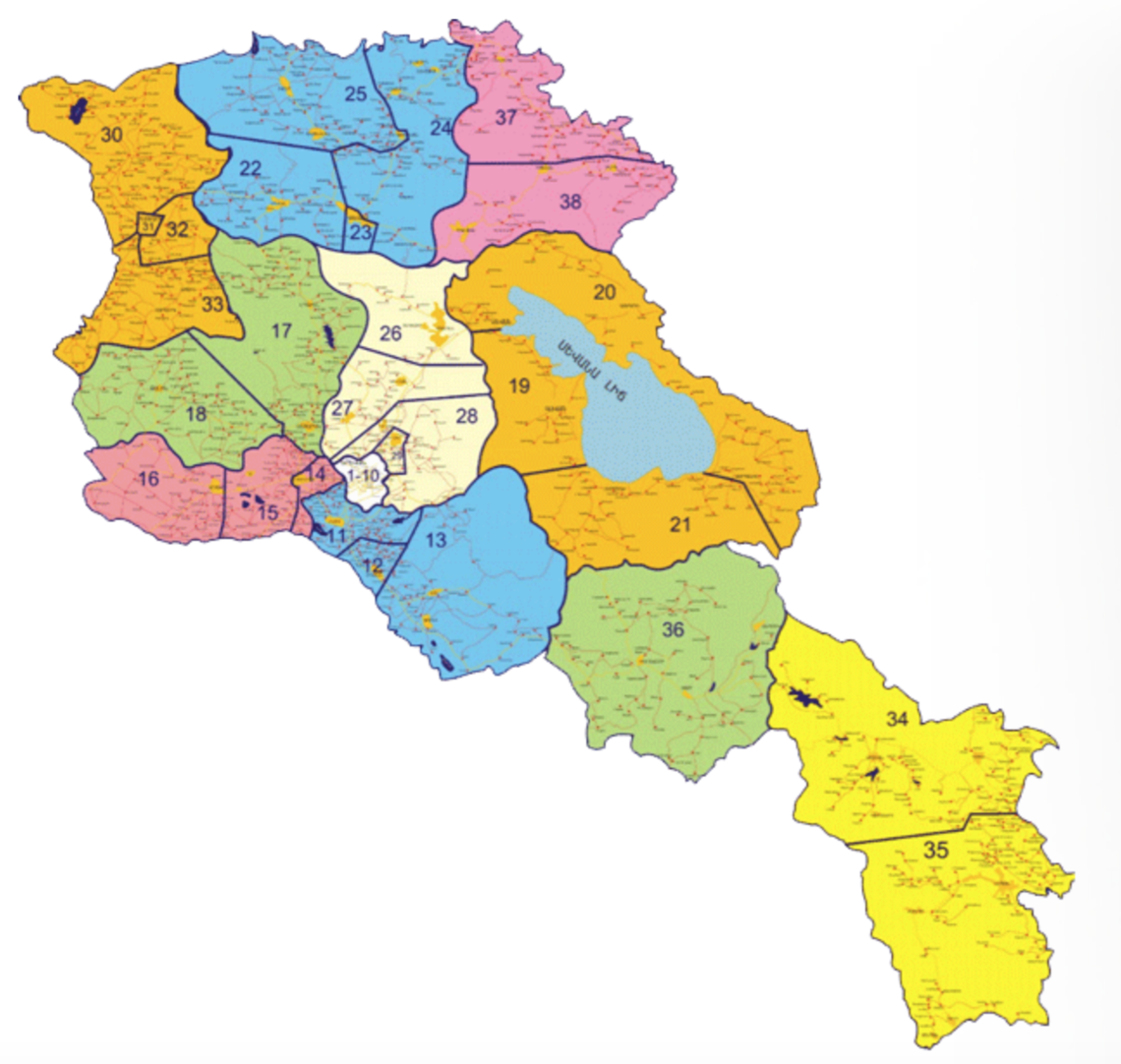

District electoral commissions across Armenia.
“ In order to secure seats in parliament, political parties will have to pass a minimum five percent threshold. Blocs will require a minimum seven percent threshold. ”
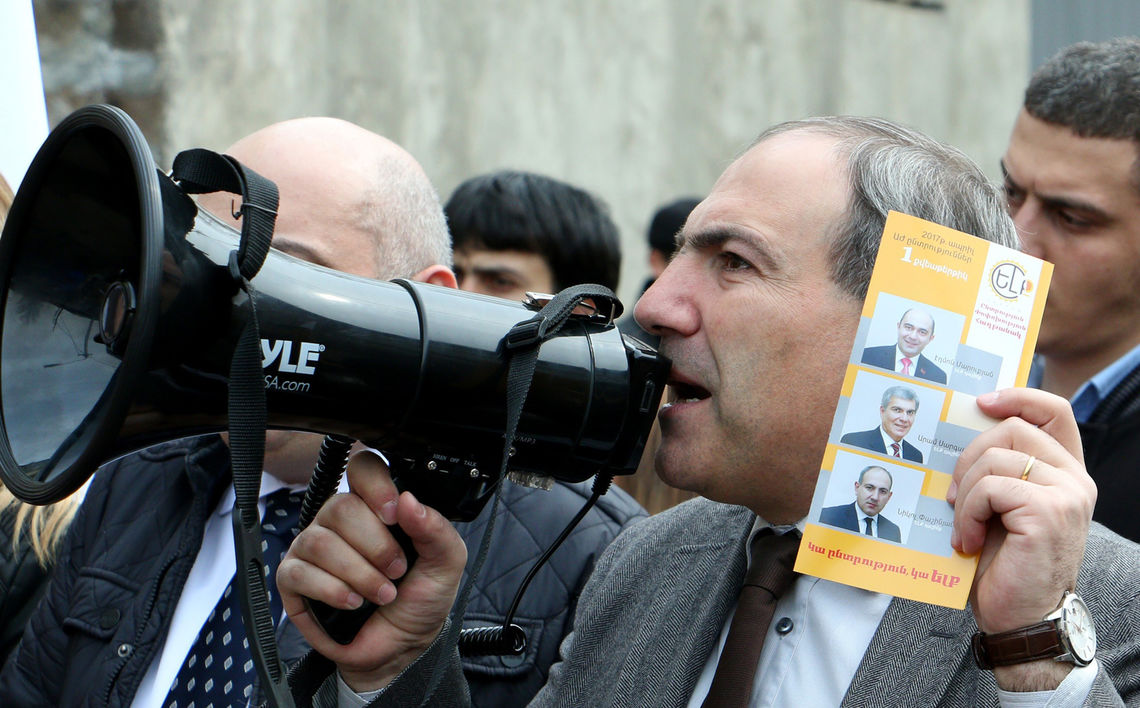

Nikol Pashinyan, leader of Civil Contract, one of the three political parties in the Yelq Bloc, speaks to voters at a campaign rally.
“ ORO has 148 candidates of which four are currently Members of Parliament, 28% are women and 47% are unemployed. ”
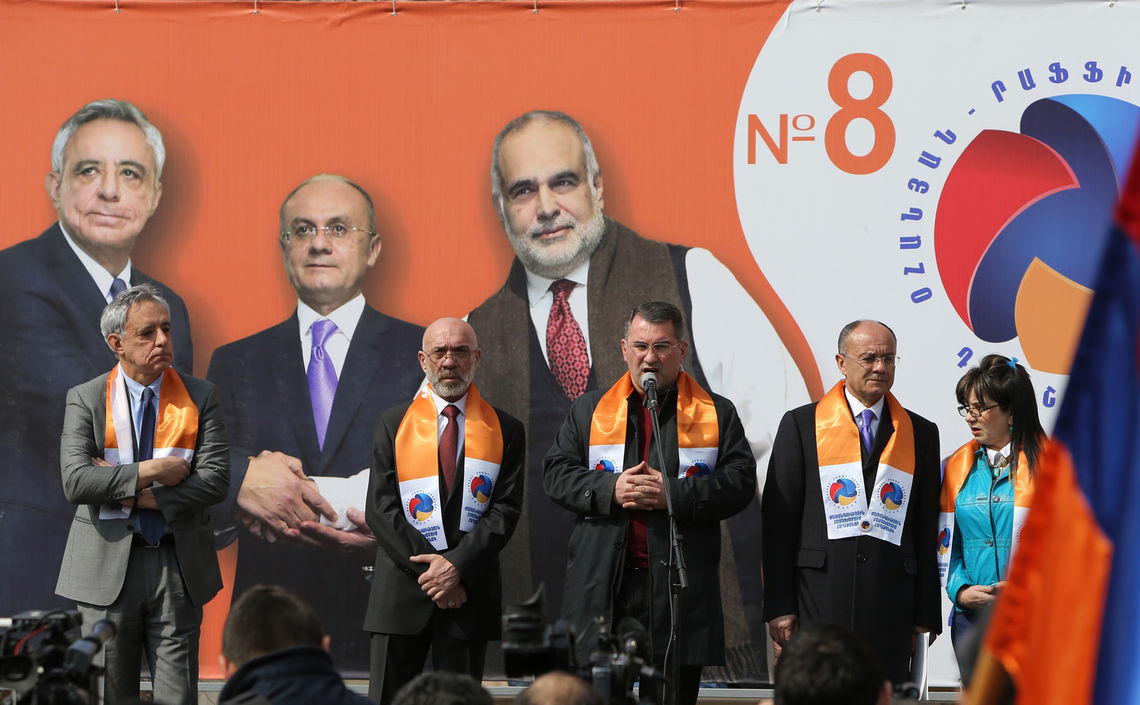

ORO Bloc is comprised of two political parties – Unity and Heritage – and former Defense Minister Seyran Ohanyan.
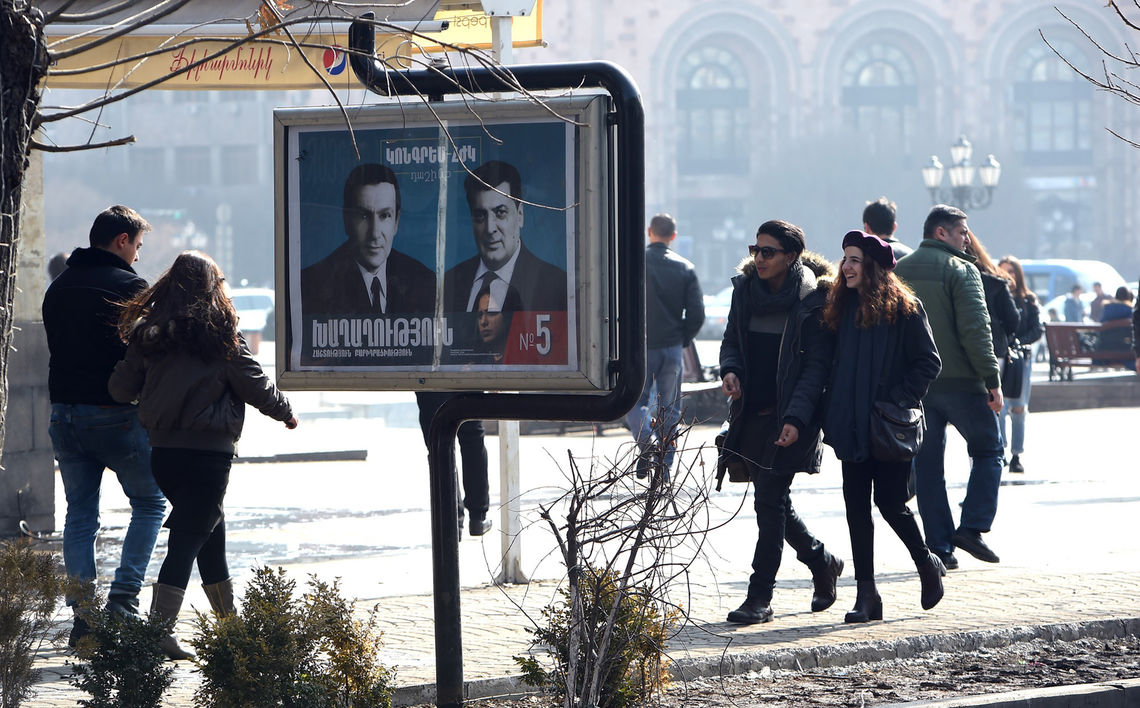

For their campaign posters the candidates have chosen not to opt for recent photos.
“ Former President Levon Ter-Petrosyan and former presidential candidate Stepan Demirchyan have joined forces under the slogan: Peace, Reconciliation, Neighborliness. ”
The top ten names on the bloc’s national electoral list.
- Gagik Tsarukyan (Leader of Prosperous Armenia)
- Ishkhan Zakaryan (Prosperous Armenia, Chairman of the Control Chamber of the Republic of Armenia)
- Naira Zohrabyan (Prosperous Armenia Parliamentary faction leader)
- Vardan Postanjyan (Prosperous Armenia, Professor at YSU)
- Mikayel Melkumyan (Prosperous Armenia, Member of Parliament)
- Ararat Zurabyan (Pan-Armenian National Movement, unemployed)
- Tigran Urikhanyan (Alliance Party, Member of Parliament)
- Iveta Tonoyan (Prosperous Armenia, Kentron TV, News Director)
- Argam Abrahamyan (Independent, Mayor of Artashat)
- Vartevan Grigoryan (Prosperous Armenia, Professor at the Nalbandyan University of Shirak)
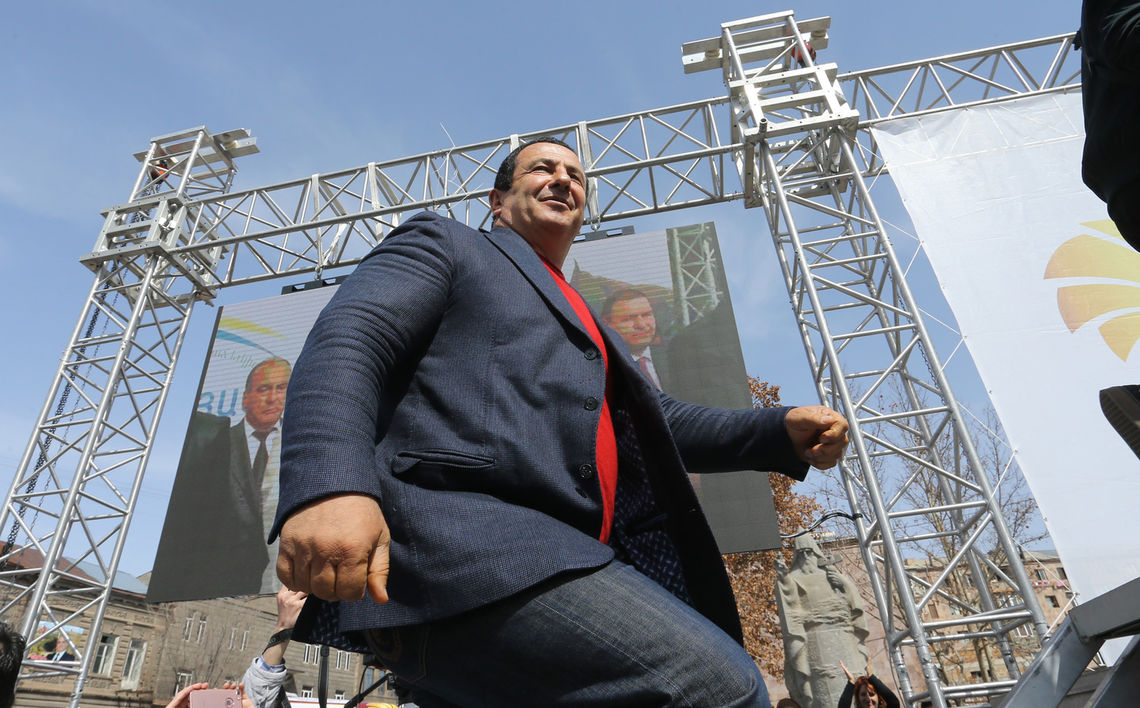

The Tsarukyan Bloc has a national list of 188 candidates of which fifteen are currently Members of Parliament, 28 percent are women and 20 percent are unemployed. Their slogan is “It’s Time to Change and to Build.”
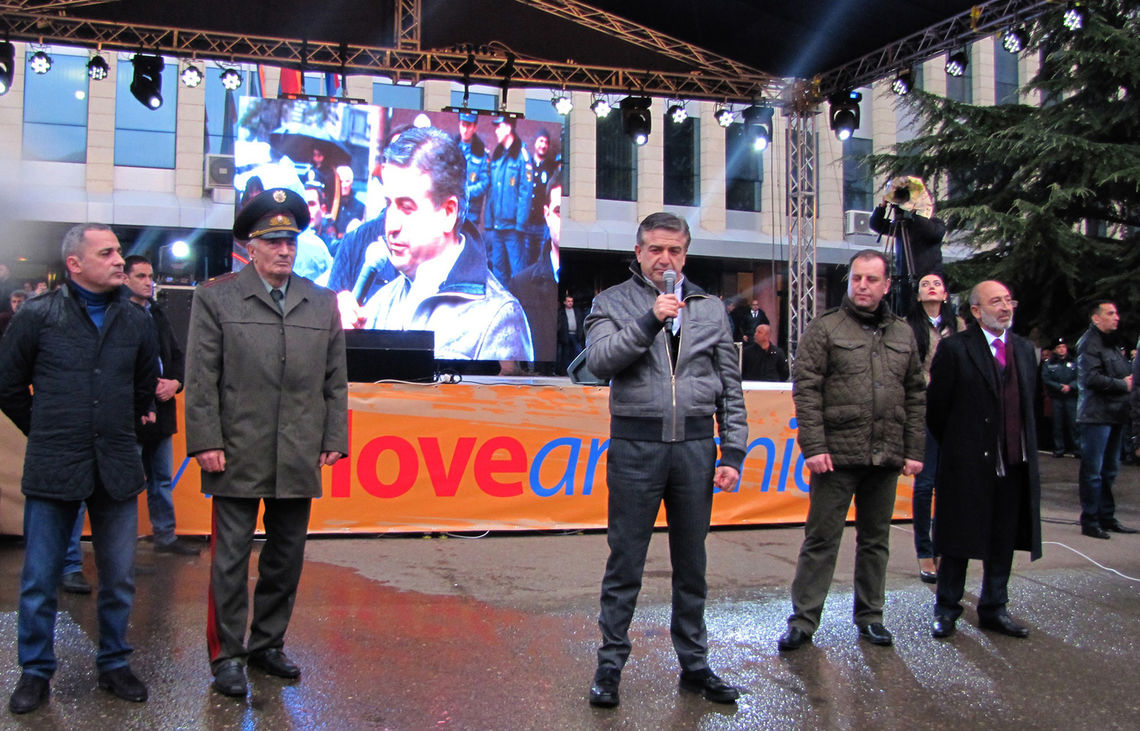

“ The RPA national list includes 55 current Members of Parliament; 29% are women, 31% are independent or other party members. ”
Armenian Revolutionary Federation – Dashnaktsutyun (ARF)
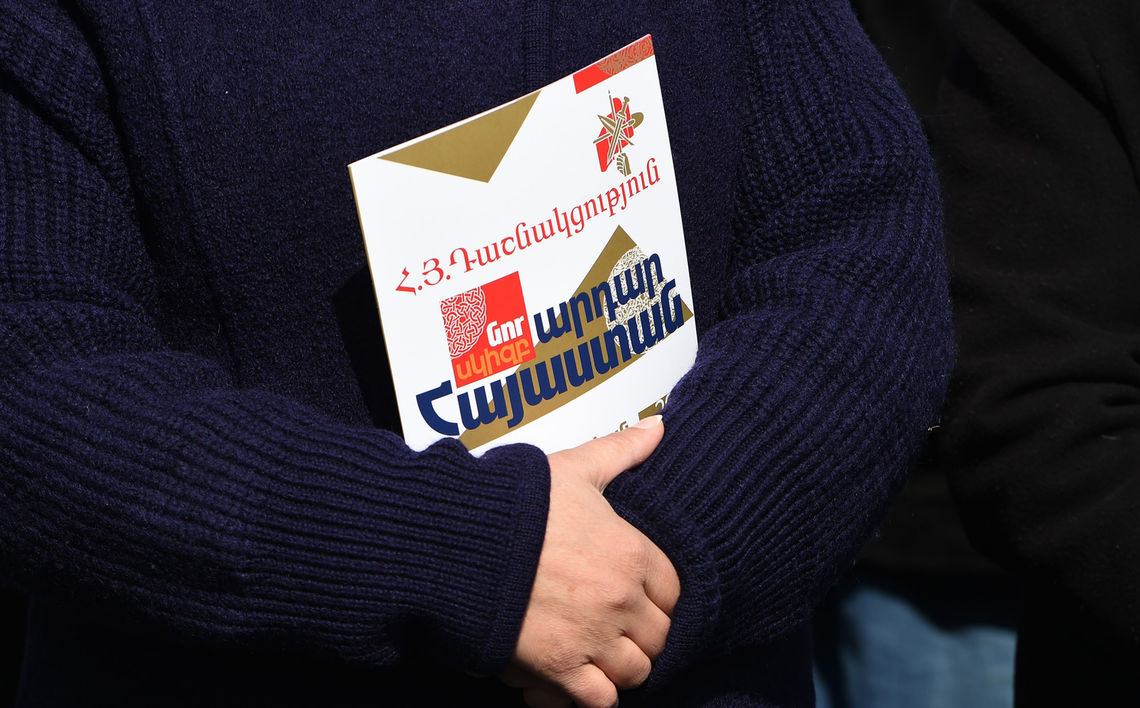

ARF is a junior coalition partner in the current parliament and holds three ministerial portfolios in Armenia’s government.
“ The ARF has a national list of 171 candidates of which five are currently Members of Parliament, 28% are women, 28% are independent and 10% are unemployed. ”
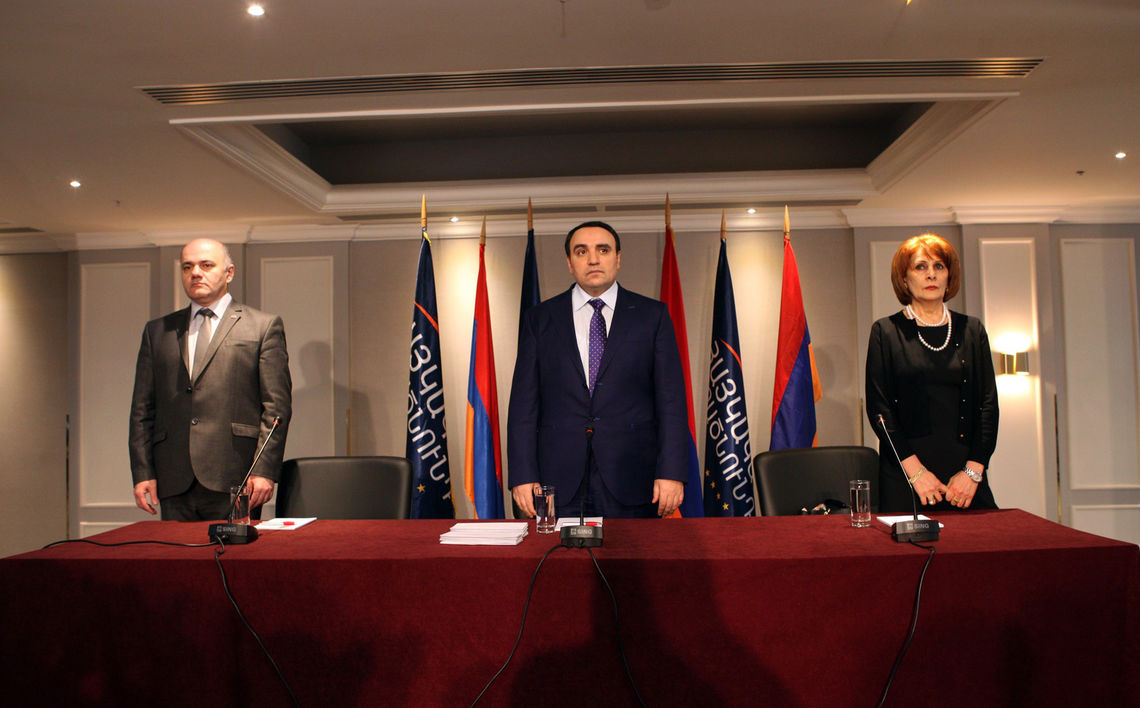

The first three candidates on the Renaissance Party electorial list. From left to right: Mher Shahgeldyan, Artur Baghdasaryan and Heghine Bisharyan.
“ Formerly the Rule of Law Party, the Renaissance Party is led by Artur Baghdasaryan. Since its foundation in 1998, the political party has been part of various coalition governments. ”
The top ten names on the party’s national electoral list.
- Khachatur Kokobelyan (Member of Parliament)
- Hrant Bagratyan (Freedom Party, Member of Parliament)
- Styopa Safaryan (Independent, Member of the Yerevan Council of Elders)
- Anahit Bakhshyan (Independent, Member of the Yerevan Council of Elders)
- Masis Ayvazyan (Executive Secretary, Free Democrats Party)
- Anjela Khachatryan (Deputy Chairman, Free Democrats Party)
- Armen Arakelyan (Unemployed)
- Sona Minasyan (Free Democrats Party Spokesman)
- Narek Aivazyan (Electric Yerevan NGO Director)
- Gagik Baghdasaryan (Independent, Member of the Yerevan Council of Elders)
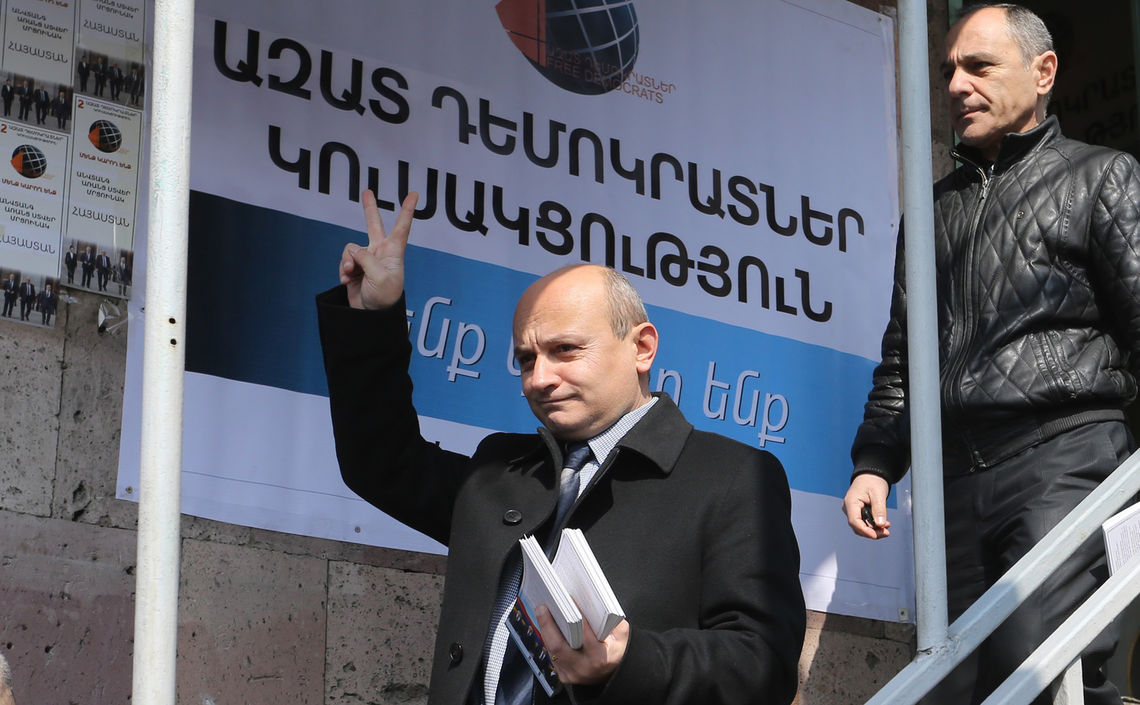

The Free Democrats Party was created in 2011 and participated in the 2012 parliamentary elections for the first time. The current list of candidates includes former members of the Heritage Party.
The following is the top ten names on the party’s national electoral list.
- Tajat Sargsyan (First Secretary of the Communist Party of Armenia)
- Vazgen Safaryan (Independent, Chairman of the Progressive Communist Party)
- Gagik Manukyan (Secretary of the Communist Party of Armenia)
- Mariam Shahinyan (Founder of the Music Festival of the National Gallery of Armenia)
- Hamlet Danielyan (Independent, President of the Republican Branch of the Industry Workers Trade Organization)
- Norayr Boghosyan (Member of the Communist Party of Armenia Bureau)
- Yerchanik Ghazaryan (n/a)
- Asya Otaryan (First Secretary of the Ijevan Branch of the Communist Party of Armenia)
- Armen Manukyan (Head of Production at Nairit Plant)
- Khoren Sargsyan (All-Union Communist Party Presidency Member)
